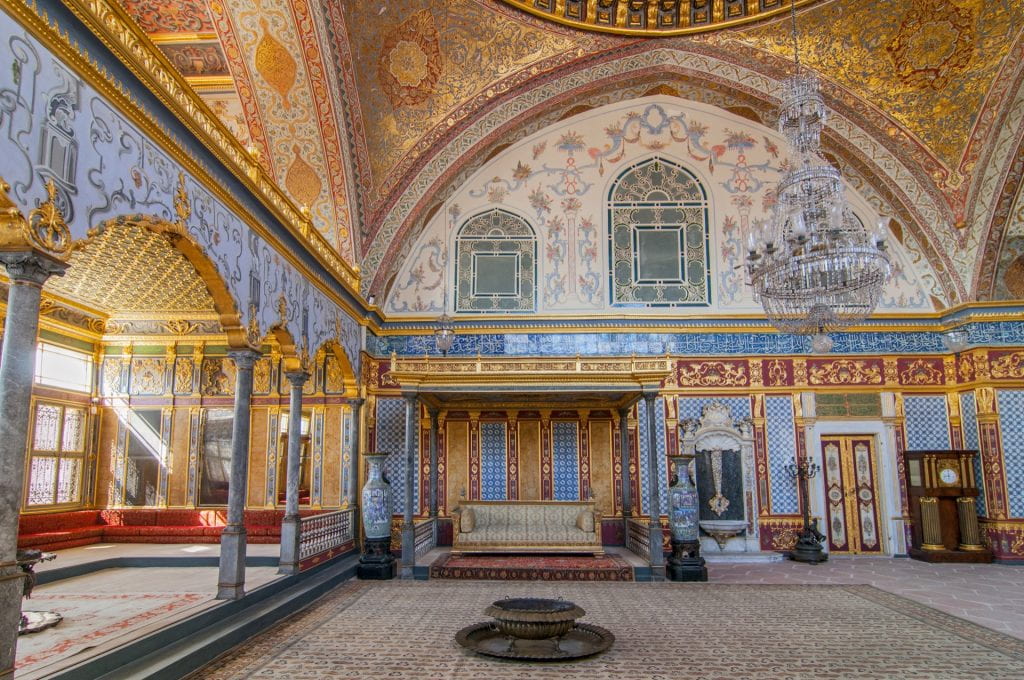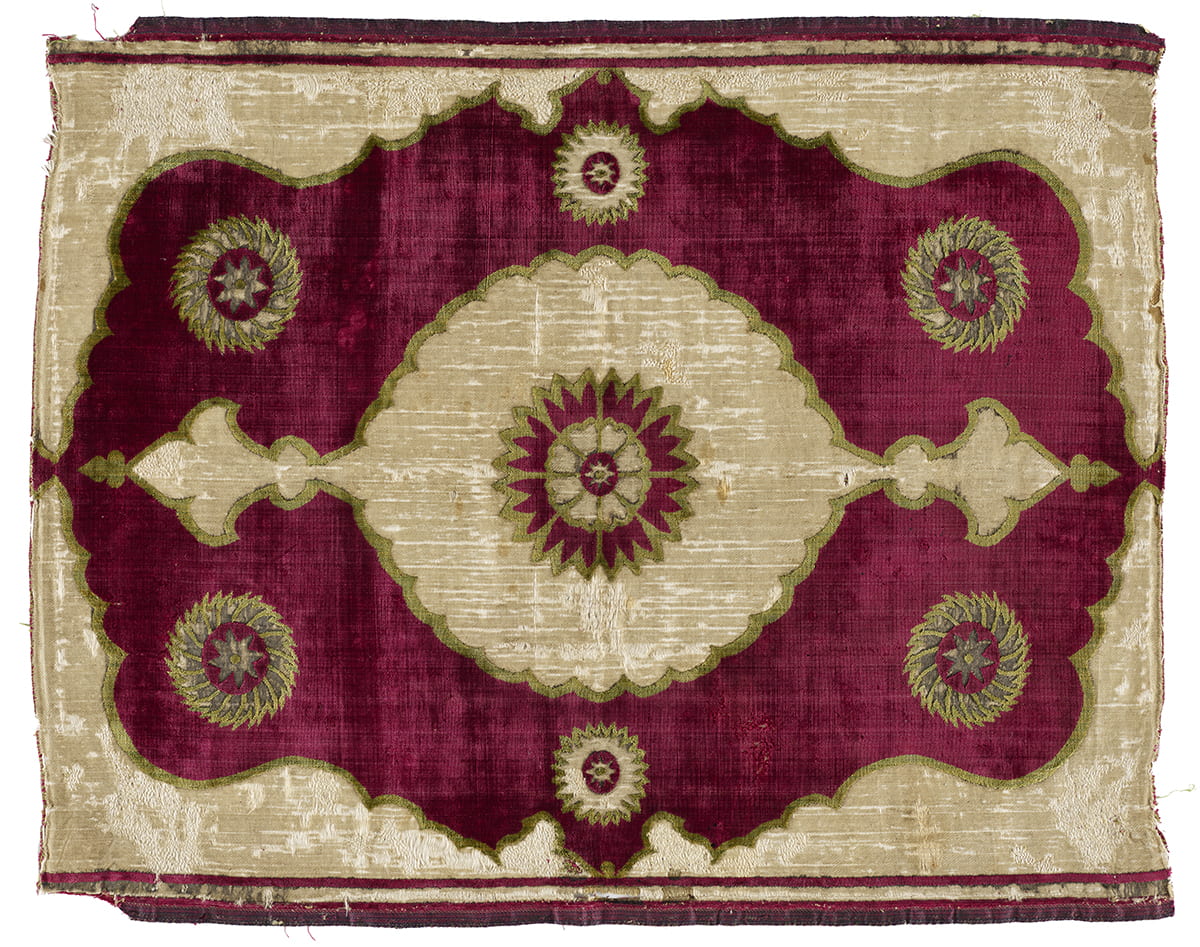By the 16th century, the Ottoman Empire was one of the most powerful states in the world. The Ottoman elite lived in splendor in opulent palaces, mansions and summer homes. A visitor to one of these households would have been welcomed into a reception room lined with low divans and an impressive display of pillows (yastıks) — each one soft, boldly patterned and shining with silver.

Audience hall and imperial throne room in the Harem of Topkapı Palace in Istanbul, Turkey. © Cezary Wojtkowski/Dreamstime.com.
The luxurious velvet of this cushion cover was likely woven in a high-end workshop in Bursa, just south of Istanbul. Bursa was a center for trade on the Silk Road and a significant producer of silk. To supply the needs of the court, however, it still relied on silk imported by traders. Local guilds processed and dyed the raw silk, produced metallic threads and wove these materials into complex fabrics.
This cover was originally bordered by a row of lappets on either end, and the ivory areas were brocaded with the shiny silver wires that still outline the small pinwheels in each corner. The austere composition, without any flowery ornament, is unusual for Ottoman textiles from this period. The lobed medallion motif — which is influenced by earlier Ilkhanid and Timurid art — and the rich chartreuse and maroon colors are more typical. Maroon was especially popular for velvets and might have been achieved using madder, cochineal or kermes as dyestuff, all of which were available.
